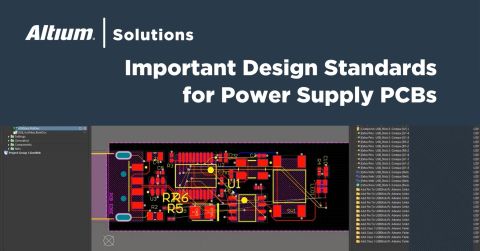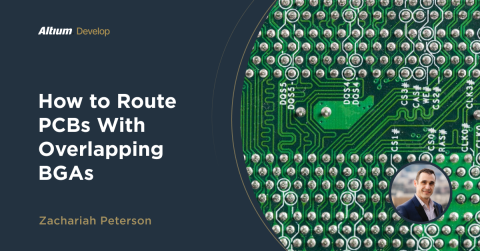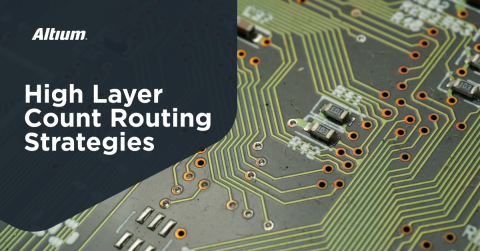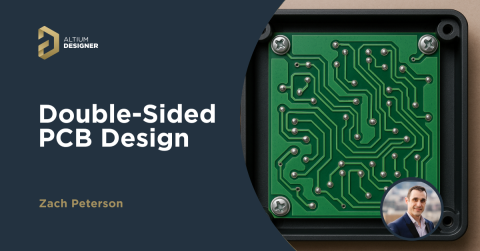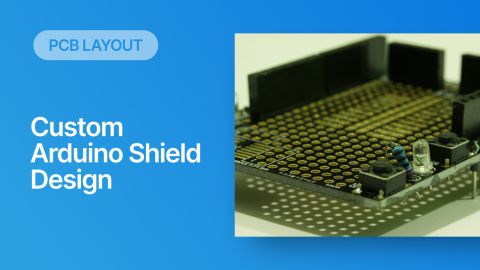Complete Guide to PCB Layer Stacks
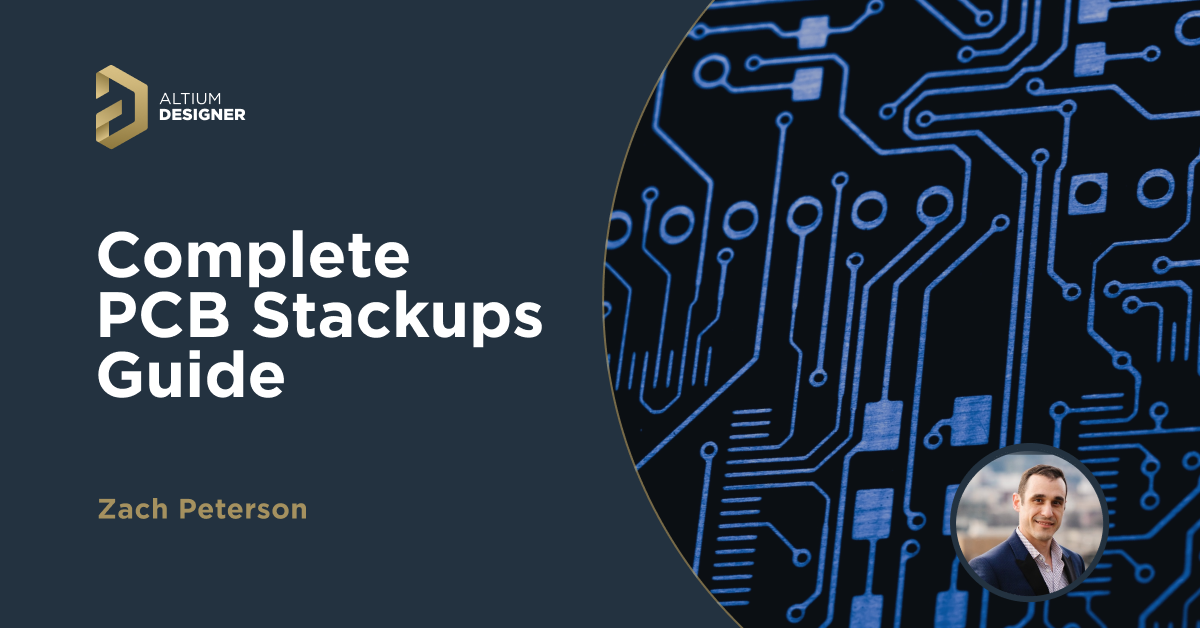
The layer stackup is the foundation for everything in your PCB. It is also a major determinant of success in EMC, signal integrity, power integrity, and many areas of reliability. For some designs, aggressive high-density PCB stackups are needed to enable routing into components, and specialty materials will be used.
The goal of this comprehensive guide is to provide everything designers need to know about a PCB layer stackup. The different kinds of stackups commonly used to build PCBs, including high-density stackups that often match the structure of integrated circuit substrates.
Common PCB stackups with FR4 materials
The most common category of materials used in PCB stackups is FR4, which refers to the flame retardant effectiveness of these materials. This grade of material spans many commercially available materials, and these materials make their way into many different types of stackup constructions. FR4-grade materials are available in a variety of thicknesses and a range of material values, making them suitable in low layer count boards, high layer counts, high voltage products, and many devices requiring long-term reliability.
|
Flammability rating |
UL94-V0 |
|
Dielectric constant |
3.3-4.8 (depends on weave style, resin content, and material composition) |
|
Breakdown field strength |
Approximately 20 kV/mm |
|
Standard thickness |
1.57 mm |
|
Glass transition temperature |
~130 °C (low-Tg laminates) or ~170 °C (high-Tg laminates) |
Building stackup requires arranging prepregs and cores of specific thickness values until the overall target board thickness is reached, sort of like solving a puzzle. In some designs, such as high-density designs that use FR4, the layers used in the PCB force layers to be thin. The designer's job is to develop these constraints while selecting the right arrangement of core and prepreg to build the stackup.
Typical Core and Prepreg Arrangements
Four-layer boards are the place to start when learning about typical core and prepreg arrangements in a PCB stackup. The standard practice is to put the core layer at the center, and it will already be covered with copper foil. The prepreg layer is then placed on the outside and laminated with copper foil.
The same alternating core prepreg pattern extends itself up to higher numbers of layers. Depending on the total number of layers in the PCB stackup, the central dielectric layer might not be a core layer. In addition, in order to achieve a specific dielectric thickness on certain layers, a designer might use two prepreg layers together as a dielectric.
Final note here is one regarding symmetry. It is most common to create PCB stackups that are symmetric across the central layer. In other words, the top half layer arrangement is mirrored onto the bottom half of the PCB stackup. This is not a hard requirement and there are many designs which will use non-symmetric layer arrangements for various reasons. Some of these examples include hybrid stackups for RF designs, metal-backed PCBs, and rigid-flex PCBs.
Standard PCB Stackups
Many PCB fabrication companies provide a simple option for selecting a stackup, known as a standard stackup. These are pre-designed stackups which can be built from materials the manufacturer keeps in heavy supply. These give many designers a fast and cheap option for building PCBs quickly, even production boards and high-reliability PCBs.
Standard stackups can be provided to customers upon request issued to the PCB fabricator, or the fabrication company will publish their available standard stackups on their website. These PCB stackups standardize the total board thickness and will come in multiple layer counts. They will also use very common FR4 grade materials in order to keep costs low.
Learn more about standard stackups offered by manufacturers in this video:
Many designers will use a standard stackup simply because it eliminates the burden of creating the stackup from the designer. However, this is not the optimal choice for every design as many products require more specialized materials in the PCB stackup, or even flexible materials for a rigid-flex stackup.
Flex and Rigid-Flex PCB Stackups
In a flexible stackup or a rigid-flex PCB stackup, flexible materials are used to carry conductors and sometimes components. Rigid-flex PCBs also include rigid materials found in standard FR4 stackups. A section with rigid materials is most commonly used for mounting components and fixing the rigid-flex assembly to a mechanical mount. The rigid section might also include a standard or board-to-wire connector for interfacing with another assembly in the system.
A typical multi-layer flex PCB stackup is shown below. These PCB stackups use adhesive layers to bond the adhesiveless polyimide dielectric with copper foil and to build up the multi-layer stack. The copper foil is etched in a standard process, and it may be drilled if vias are needed for signals in the flex region.
If rigid layers are needed, then standard region materials can be bonded to the flex section. Signals transition from the flex layers into the rigid layers using vias, which requires drilling and plating the rigid-flex layer stack after the rigid layers are laminated around the internal flexible layers. Rigid-flex stackups can be asymmetric, have an odd number of layers, and typically do not have a standardized total thickness.
It is possible to put a single stiffener as a prepreg on one area of the rigid-flex stackup and a more complex multi-layer rigid stack in a different area of the rigid-flex stackup. Rigid-flex layer stacks can also get very complicated when multiple branches and flex regions are involved. Designers have quite a bit of freedom to innovate their routing approach and stackup design.
Metal Core and Metal-Backed PCB Stackups
High-power designs that operate under high thermal loads can benefit from PCBs with a metal separator or backing layer, known as metal core or metal-backed PCB stackups. By integrating the metal section into the PCB stackup, the metal section acts like a very large integrated heat sink. Metal-backed and metal core PCB stackups offer a way to dissipate heat into a larger metal chassis, which is why these PCBs are often used in aerospace, automotive, and high-power lighting designs.
Metal-backed PCBs typically use an adhesive or bonding film to attach the PCB to the metal backing plate. The metal plate is typically made of aluminum due to its lower cost and weight, although some higher-end designs may use stainless steel.
Metal-core PCBs place the metal plate in the central region of the PCB stackup so that it functions as the central core layer. It will then be insulated from the top-half and bottom-half stackup sections by bonding a copper-less prepreg to the metal plate. Another option is to use an adhesive film between the plate and the signal layer sections.
When used in the core layer, a designer may wish to route vias through the metal core in order to pass signals between the top and bottom stackup sections. Through-hole vias can be placed through the metal core by using a double drilling process, which proceeds as follows:
- The vertical path through the metal core is first drilled with an oversize bit
- The oversized drilled holes are filled with an insulating epoxy
- Once the epoxy is cured, the epoxy is drilled with the desired through-hole via size
- The drilled holes are plated in a standard process
This process can have low yield and should only be used in specialized situations as it requires control over the throwing strength during plating and a smooth enough hole wall for plating deposition. Make sure you consult with your fabrication house to ensure this approach can be implemented in your build before placing through-hole vias in your metal core design.
High-Density PCB Stackups
PCB stackups for high-density designs often use thinner materials for the outer layer stacks. The outer layers, often called “build-up layers,” are laminated onto a thick inner core layer that may contain a mechanically drilled buried via that transits between the top-half and bottom-half build-up layer sets. Thinner layers are primarily used for two reasons:
- To allow for fabrication of blind and buried vias, which may be mechanically drilled or laser drilled
- To allow for thinner traces on impedance controlled interfaces
There are some types of high-density PCB stackups which have become standardized based on the via spans used in the design. The Type I stackup (shown below) is the only standardized HDI PCB stackup that uses skip vias and blind vias, while the other standardized HDI stackups all use blind and buried vias.
These thin layers allow for placement of small diameter vias in order to route signals into high-density BGAs. These thinner outer layers are necessary as the required via size gets smaller, which is needed to satisfy the aspect ratio requirement for the fabricated vias. The material sets used in these designs include standard FR4 materials, but not all manufacturers have their materials available in very thin constructions (e.g., 1 to 3 mil thick).
When very high density packages are used, material sets commonly used in integrated circuit substrates can be used in HDI PCBs. These materials include polyimide films, Ajinomoto build-up film, resin-coated copper (RCC), and BT epoxy.
PTFE PCB Stackups
PTFE materials are commonly used in RF designs that require very high or very low dielectric constant. These materials are designed by incorporating ceramic fillers into a PTFE matrix, which then gives the mixture the desired dielectric constant. PTFE materials are common in RF designs operating at very high frequency for two reasons:
- Certain commercially available PTFE materials have very low loss tangent at these frequencies
- PTFE PCB materials do not require a glass weave reinforcement, so an unreinforced material will have very low skew
Both factors are highly desirable for RF signal integrity where phase matching is required, as well as in differential digital interfaces that require skew compensation in routing.
Many PCB stackups that only use PTFE are 2-layer designs, but this is not a strict requirement. PTFE PCB stackups can be built as multilayer designs with cores as the main rigid layer and with a bonding layer that takes the place of a conventional prepreg. The PTFE version of a prepreg is known as a “bondply” and it plays the same role as a prepreg in an FR4 stackup. Bondply films are thin materials, so it is not uncommon to see an inverted RF stackup with a bondply used as the central bonding layer:
Less Common Stackup Designs
The designs listed above are commonly used in many commercial products across many industries and verticals. There are still many other stackup designs that see significant use in commercial products and which can be manufactured at scale. Some of these less-common PCB stackup designs include:
- Non-symmetric PCB stackups
- Ceramic PCBs and substrates
- Hybrid PCBs (mixing multiple materials into the same layer stack)
- Heavy copper PCB stackups
- Ultra-thin or ultra-thick rigid PCBs
No matter what type of PCB stackup you want to create, Altium’s complete set of product development tools can help you design a stackup that matches manufacturer requirements and gives you full control over electrical performance. Altium’s electronics design tools help engineers across industries create high-quality PCBs for commercial products while collaborating across engineering disciplines. See how Altium’s design tools can help you in this video:
Whether you need to build reliable power electronics or advanced digital systems, use the complete set of PCB design features and world-class CAD tools offered by Altium. Only Altium provides the world’s premier electronic product development platform, complete with the industry’s best PCB design tools and cross-disciplinary collaboration features for advanced design teams. Contact an expert at Altium today!

